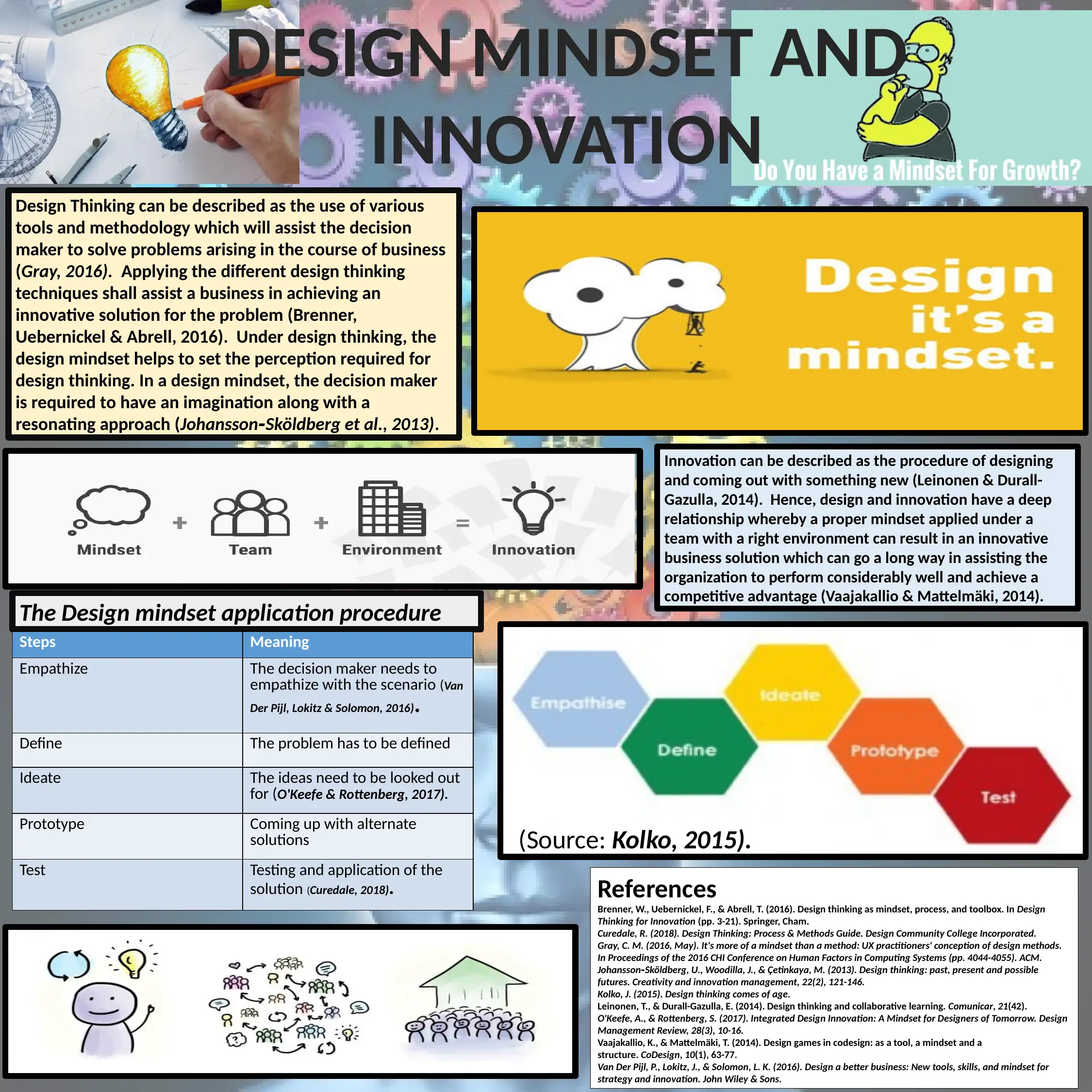Design Thinking, Innovation, Mindset and Business Solutions Report
VerifiedAdded on 2023/06/09
|1
|567
|173
Report
AI Summary
This report delves into the realm of design thinking and its pivotal role in fostering innovation and generating business solutions. It examines the application of the design mindset, emphasizing the importance of empathy, ideation, prototyping, and testing in the problem-solving process. The report highlights the interconnectedness of design and innovation, illustrating how a well-defined design mindset within a collaborative team environment can yield innovative business solutions. The report also provides a step-by-step approach to design thinking, encompassing empathizing with the user, defining the problem, generating ideas, creating prototypes, and conducting tests to validate solutions. The report also includes references to key publications on the subject.



![[object Object]](/_next/static/media/star-bottom.7253800d.svg)